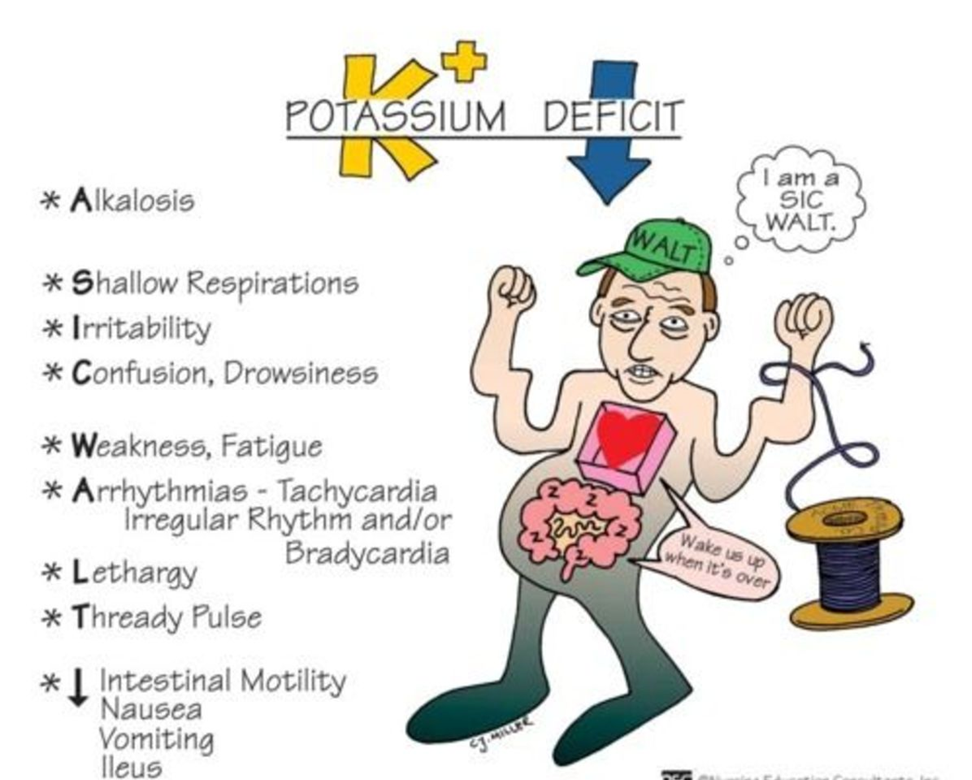A nurse is caring for a client who the provider suspects might have pernicious anemia. The nurse should expect the provider to prescribe which of the following diagnostic tests?
Schilling test
Haptoglobin
Sweat test
Antinuclear antibodies
The Correct Answer is A
A. Schilling test: This is the correct answer. The Schilling test is used to diagnose pernicious anemia, which is caused by vitamin B12 deficiency. The test measures the absorption of vitamin B12 in the gastrointestinal tract.
B. Haptoglobin: Haptoglobin is a test used to assess hemolysis and is not specific for pernicious anemia.
C. Sweat test: The sweat test is used to diagnose cystic fibrosis and is not relevant to the diagnosis of pernicious anemia.
D. Antinuclear antibodies: Antinuclear antibodies are tested to diagnose autoimmune disorders, such as systemic lupus erythematosus (SLE), and are not specific to pernicious anemia.
Nursing Test Bank
Naxlex Comprehensive Predictor Exams
Related Questions
Correct Answer is B
Explanation
A. Maintaining a semi-Fowler's position as often as possible: While maintaining an elevated position can assist with breathing, it may not directly address the issue of tenacious bronchial secretions. Adequate hydration and other measures are often more effective.
B. Encouraging the client to drink 2 to 3 L of water daily: This is the correct answer. Adequate hydration helps to thin mucus, making it easier to clear from the airways. Drinking 2 to 3 liters of water daily is a helpful strategy to promote hydration and reduce the viscosity of bronchial secretions.
C. Helping the client select a low-salt diet: While a low-salt diet may have cardiovascular benefits, it is not a primary intervention for addressing tenacious bronchial secretions. Hydration and airway clearance techniques are more directly relevant.
D. Administering oxygen via nasal cannula at 2 L/min: While oxygen therapy may be necessary in COPD, it is not the primary intervention for managing tenacious bronchial secretions. Hydration and other measures aimed at thinning mucus are more appropriate.
Correct Answer is A
Explanation
A. Fatigue: Hypokalemia (low potassium levels) can lead to fatigue and weakness. Potassium is essential for proper muscle and nerve function, and a deficiency can result in muscle weakness and decreased energy levels.
B. Pitting edema: Pitting edema is more commonly associated with fluid retention, which can occur in heart failure. Hypokalemia is not typically a direct cause of pitting edema.
C. Dyspnea: Dyspnea (shortness of breath) is a symptom commonly associated with heart failure, and while potassium imbalance can affect cardiac function, it is not a specific manifestation of hypokalemia.
D. Oliguria: Oliguria (decreased urine output) is not a typical manifestation of hypokalemia. However, it can be associated with heart failure and other renal conditions.

Whether you are a student looking to ace your exams or a practicing nurse seeking to enhance your expertise , our nursing education contents will empower you with the confidence and competence to make a difference in the lives of patients and become a respected leader in the healthcare field.
Visit Naxlex, invest in your future and unlock endless possibilities with our unparalleled nursing education contents today
Report Wrong Answer on the Current Question
Do you disagree with the answer? If yes, what is your expected answer? Explain.
Kindly be descriptive with the issue you are facing.
